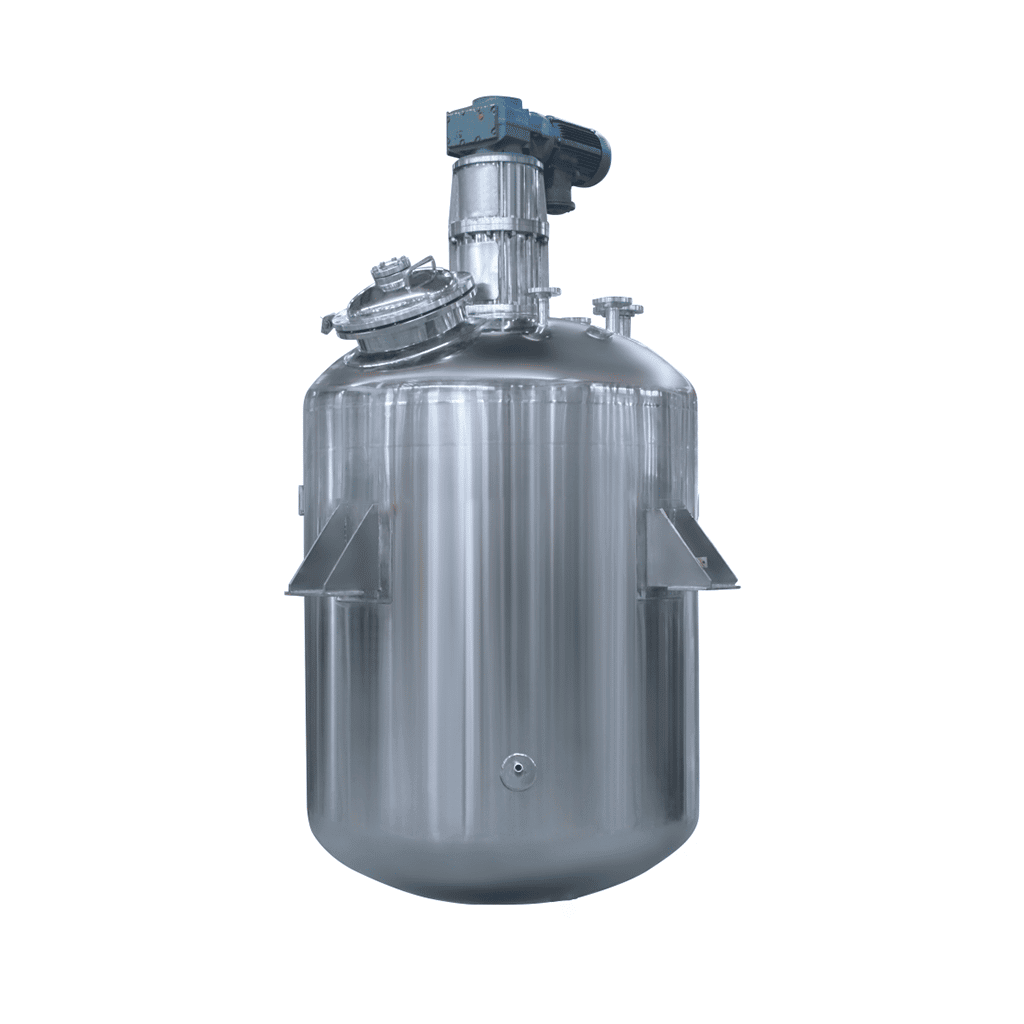
-24-1.jpg)
Stainless Steel Reactor
Stainless Steel Reactor: used in dairy products, sugar, beverages, and other fields
Material
stainless steel (316, 304)
Capacity (L)
10-10000+
Mixing system
anchor, paddle, frame and others
Heating system
electric heating, oil heating and others
A stainless steel reactor is a stainless steel container equipment. The stainless steel reactor consists of a kettle body, a kettle lid, a stirrer, a jacket, a bracket, a transmission device, a shaft seal device, etc. Materials and openings can be made according to user needs and process requirements. Stainless steel reactors are mainly used for stirring, homogenizing, and mixing storage of dairy products, sugar, beverages, food, and various pharmaceuticals.
Request a quoteA stainless steel reactor is one of the core equipment for the production of resins and paints, and the reaction equipment of the entire production process includes a chemical reactor with a stirrer and a feeding device. condenser, a heating device, etc, usually, according to Due to the difference in the materials of the action, the selected stainless steel reactor also has certain differences.

Stainless steel reactors can be named alkyd resin reactors, amino resin reactors, emulsion reactors, etc. It can be called an alcoholysis kettle, esterification kettle, polymerization kettle, etc. according to the reaction carried out. According to the reaction temperature, it can also be called a high-temperature resin reactor (150~300℃) and a low-temperature resin reactor (60~150℃). Some use stainless steel reactors for heating, which are called direct-fire heating reactors, resistance far-infrared heating reactors, power frequency induction heating reactors, etc.
Common stainless steel reactors are generally made of stainless steel, usually chromium-nickel austenitic stainless steel. Stainless steel hot-rolled steel plates are used to manufacture stainless steel reactors. The main models are OCr19Ni9 and OCr18Ni12Mo2, which are equivalent to 304 and 316L. The stainless steel reactor is sturdy and durable and can be used to manufacture both high-temperature resin reactors and low-temperature resin reactors. Ultra-low carbon stainless steel with a carbon content of not more than 0.03% also has good resistance to intergranular corrosion. After many experiments, it has been shown that this stainless steel reactor has extremely high toughness, plasticity, corrosion resistance, high-pressure resistance, etc., and is a commonly used reaction equipment in large chemical factories.
The advantages of the stainless steel reactor
1. The mechanical properties of stainless steel are good, as long as the design is reasonable, it can withstand high working pressure, and can also withstand small feeding times.
Impact of solid material.
2. Good heat resistance and wide operating temperature range (-196~600℃). It will not oxidize and peel at higher temperatures and can be used for direct-fire heating.
3. It has good corrosion resistance and does not rust.
4. The heat transfer effect is better than that of the glass-lined reactor, and the speed of heating and cooling is faster.
5. It has good processing performance and can be made into reaction kettles of various shapes and structures according to process requirements. The wall of the kettle can also be ground and polished so that the material does not hang when the material is discharged, and it is also easy to clean. The disadvantage of a stainless steel reactor is its high price, which is much more expensive than the glass-lined reactor. In addition, there are limitations in corrosion resistance, such as intergranular corrosion when it comes into contact with halogen elements (fluorine, chlorine, bromine, etc.), therefore, stainless steel reactors cannot work in the presence of halogen elements.




